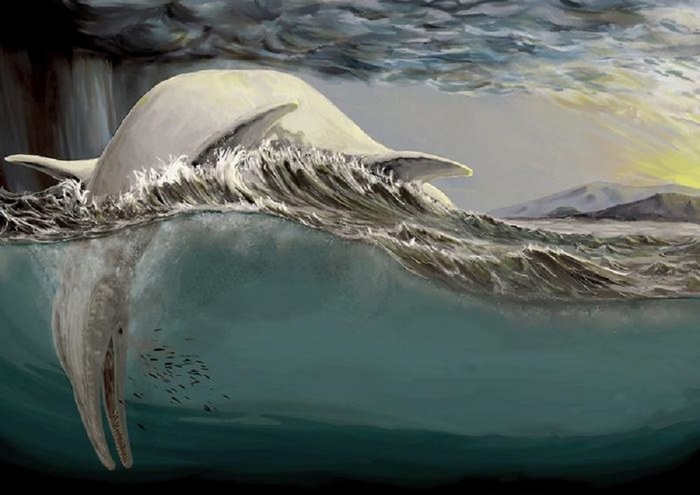A jawbone discovered more than 30 years ago could be the key to proving that dogs populated Central America 12,000 years ago.
And if there was a dog, it was bound to have a master, which would change current knowledge, according to Costa Rican and Mexican researchers.
Because if there is evidence of human migration in Mexico, Chile or Argentina at that time, no trace has yet been formalized in Central America.
It is among other bone remains, notably those of a species of Equus (giant horse) and of a glyptodon (large armadillo), that this jaw was unearthed in the early 1990s in a site dating back to from the Upper Pleistocene (12,000-10,000 BC), discovered twelve years earlier in Nacaomé, Costa Rica.
But the jawbone was then labeled as that of a coyote ... before fading into oblivion.
Man's best friend
“
It seemed very strange to us that there was a coyote in the Pleistocene. And when we looked at these bone remains, we started to see characteristics that could be those of a dog,
”says Costa Rican researcher Guillermo Vargas. Examining the images of the jaw, too, Mexican biologist and zooarchaeologist Raul Valadez Azua, of the Anthropological Research Institute of the National Autonomous University of Mexico, also asserts that he may well be "the
best friend." of man
”.
“
It could be the oldest dog in the Americas,
” enthuses Guillermo Vargas. The oldest dog fossil in the Americas was discovered in Alaska and dated to 10,000 years ago. Above all, "
this discovery of the dog would be the first human proof in Costa Rica of a much older period and confirms the theory of human migrations until the population of the continent
", he underlines. According to this theory of the settlement of the American continent, humans migrated from Asia through the Bering Strait, located between Siberia and Alaska, when sea levels fell during the last great ice age.
For the moment, the jawbone is kept by the National Museum of Costa Rica and the researchers have received an offer from the University of Oxford to carry out studies on mitochondrial DNA and carbon 14. These would make it possible to obtain more genetic information and determine more precisely the age of the fossil.
The museum also wants the results to be validated by a specialist publication.
Change of dentition
Guillermo Vargas, his compatriot Natalia Rodriguez and the Nicaraguan Myrna Baez, with the support of the Mexican Raul Valadez Azua, have been studying the relationship between pre-Hispanic cultures and dogs for six years, as part of the "
Xulo
"
project
, which means "
Dog
" in the native language of the archaeological zone of Gran Nicoya. "
We have done a lot of research on the history of canines because they are traces of human presence
" and when the dog becomes domestic "
the jaw changes, the teeth are less sharp, less intended to tear bones and meat
" , explains Guillermo Vargas. When "
the dog eats the surplus of human food, its teeth are not so determining for its subsistence
”. And the found jaw "
reflects this difference
" he adds.
“
The first domesticated dogs entered the continent around 15,000 years ago, following the migration of Asians through the Bering Strait. And there have never been a dog without a human being. They moved from north to south as part of groups of hunters and gatherers,
”Raul Valadez told AFP by phone from Mexico. “
The dog-man pair is inseparable. There are no dogs without humans (...). Sometimes, we do not explore in depth what such a discovery can mean, but it can reconstruct human history
, ”he emphasizes. "
This shows us that there were societies that could have dogs for fun, that had a surplus of food.
They were not attack dogs like, for example, those that the Spaniards brought back on their second trip (to America) which were intended to kill,
”explains Raul Valadez.



/cloudfront-eu-central-1.images.arcpublishing.com/prisa/4RITWNCKAZFB3I3MBXYYKH6YDI.jpg)




/cloudfront-eu-central-1.images.arcpublishing.com/prisa/FHMSCEHBDRBXBH75XKQKTP6AD4.jpg)






